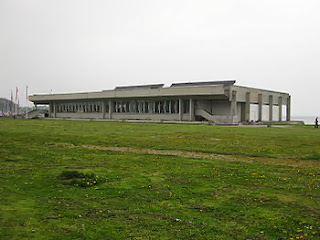Here are some museums in Copenhagen that I have visited.
The National
Museum is located in the center of the city and is housed in a building
that used to be a royal residence. It is the largest museum of natural history
in Denmark. The museum covers 14,000 years of Danish history from ice-age to
present times. Like most public attractions in Denmark it is closed on Mondays.
Ny Carlsberg Glyptotek is an art museum in Copenhagen built around the art collection of Carl Jacobsen who was the son of the founder of the Carlsberg Brewery. The museum was founded in 1882. The word Glyptotek comes from the Greek root glyphein, to carve and theke, a storing-place. Primarily a sculpture museum as indicated by the name, the focal point of the museum is antique sculpture from the ancient cultures around the Mediterranean including Egypt, Rome and Greece, as well as more modern sculptures such as a collection of Rodin works which is considered the most important outside France. However, the museum is equally noted for its collection of painting that includes an extensive collection of French impressionists and Post impressionists as well as Danish Golden Age paintings. The French Collection includes works by painters such as Jacques-Louis David, Monet, Pissarro, Renoir, Degas and Cézanne, as well as those by Post-impressionists such as van Gogh, Toulouse-Lautrec and Bonnard. The museum's collection of Rodin sculptures is considered the most important collection of Rodin's sculptures outside France. The museum's collection also includes all the bronze sculptures of Degas, including the series of dancers. Numerous works by Norwegian-Danish sculptor Stephan Sinding are featured prominently in various sections of the museum. The museum is also closed on Mondays.
The Viking Ship Museum is located outside the city in Roskilde and is the Danish national museum for ships, seafaring and boatbuilding in the prehistoric and medieval period. Around the year 1070, five Viking ships were deliberately sunk at Skuldelev in Roskilde Fjord in order to block the most important fairway and to protect Roskilde from enemy attack from the sea. These ships, later known as the Skuldelev, were excavated in 1962. They turned out to be five different types of ships ranging from cargo ships to ships of war. The ships are not in as good condition as the ones at the Viking Museum in Oslo but is worth the trip. The Viking Ship Museum overlooks Roskilde Fjord and was built in 1969 especially to exhibit the five newly discovered ships.[1] In the late 1990s excavations for an expansion of the museum uncovered a further 9 ships including the longest Viking warship ever discovered, at 36 meters. This is a living history museum and on one of the trips there they were building a Viking Ship using only tools of the time. That ship eventually sailed from Denmark to England. The museum is closed around the Christmas holiday.
If you are in Roskilde I would also walk up to the Roskilde Cathedral. This is a cathedral of the Lutheran Church of Denmark. The first Gothic cathedral to be built of brick, it encouraged the spread of the Brick Gothic style throughout Northern Europe. Constructed during the 12th and 13th centuries, the cathedral incorporates both Gothic and Romanesque architectural features in its design. Until the 20th century, it was Zealand's only cathedral. Its twin spires dominate the skyline of the town.
The cathedral has been the main burial site for Danish monarchs since the 15th century. As such, it has been significantly extended and altered over the centuries to accommodate a considerable number of burial chapels. The cathedral is a major tourist attraction, bringing in over 125,000 visitors annually. Since 1995, it has been listed as a UNESCO World Heritage Site. A working church, it also hosts concerts throughout the year.








No comments:
Post a Comment